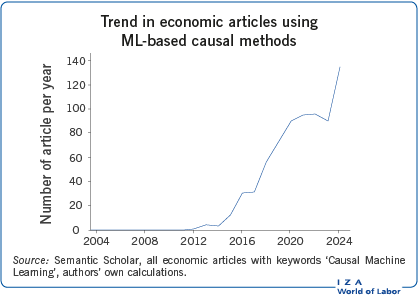Elevator pitch
Machine learning (ML) improves economic policy analysis by addressing the complexity of modern data. It complements traditional econometric methods by handling numerous control variables, managing interactions and non-linearities flexibly, and uncovering nuanced differential causal effects. However, careful validation and awareness of limitations such as risk of bias, transparency issues, and data requirements are essential for informed policy recommendations.

Key findings
Pros
Handling control variables: ML can handle (very) many control variables, improving causal effect identification.
Model flexibility: ML can manage diverse data types and complex, non-linear interactions effectively.
Efficient estimation: ML can improve the precision of average effect estimation, especially in small samples.
Uncovering differential effects: ML can reveal differential policy impacts across groups systematically.
Data-driven decisions: ML can support evidence-based policy making.
Cons
Prediction focus: ML's emphasis on prediction may lead to misinterpretation in causal contexts.
Lack of transparency: ML models are complex, making interpretation and decision-making less transparent.
Bias risks: Improper handling of model inputs (e.g. endogeneous variables) can introduce or amplify biases.
Noisy estimates: Small samples can result in imprecise and noisy estimates of differential effects.
Model instability: Instability in ML models can increase the risk of misinterpretation.